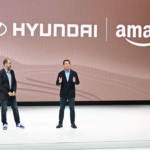By HEIDI R. KINCHEN|
The Advocate, Baton Rouge, 2/20/26 —
William Parker
William Parker was nearly seven hours into a routine shift in the Livingston control room when he thought he saw a flash on a screen.
Parker, a 41-year-old Southern University graduate with a bachelor’s degree in mathematics and master’s in physics, was hired in 2014 as an operator with the Laser Interferometer Gravitational-wave Observatory.
Parker’s job is to monitor LIGO’s highly sensitive instruments for any changes that might indicate a distortion in the laser beams running down two perpendicular, 2.5-mile tubes.
That distortion, if there was one, might be one of the ripples in space-time that Albert Einstein predicted in 1916 and that LIGO scientists had been seeking for decades. It might be the world’s first detection of gravitational waves.
Or maybe he just blinked too fast, Parker recalled thinking.
Maybe light from the ceiling or somewhere else in the control room had simply bounced off the monitor screen.
“We see certain anomalies in the monitors anyway, so I didn’t think much of it,” Parker said, noting that a variety of things from ocean tides to interstate traffic can vibrate the equipment that it’s his job to keep still or quiet. “I checked all the monitors, and everything was as it should be. Then, I got the alarm.”
LIGO has a network of scientists at other observatories and elsewhere who might see an anomaly in the data while LIGO operators are looking for it, Parker said.
“When they see something, they contact us to make sure we’re locked and listening,” Parker said. “So when I get the alarm, I’m like, ‘Hmmmm.’ You know, it was just one of those moments. Maybe I did see something. Maybe I didn’t. I didn’t want to react.”
Five minutes later, Parker received a call from another site asking if he had received an alarm. Yes. Was the detector’s equipment locked into place to continue recording data? Yes.
“At that point, it seemed like everyone had seen the anomaly,” he said. “The next step was just to collect as much data around the event as possible and wait. It could be something. I was just so nervous, thinking, ‘What did we get? What did we get?’ ”
What they recorded, at 4:51 a.m. on Sept. 14 was gravitational waves produced in the final quarter-second of a billion-year-old binary black hole merger. What LIGO scientists eventually presented to the public about their findings are illustrated visually as wiggles on a graph but also can be heard as an audible noise that some are calling a “chirp.”
The team spent weeks analyzing the data to ensure the equipment had been operating properly and that no one had touched anything, even remotely, Parker said. They also had to be certain it was not a blind injection, a process where a select group of LIGO officials are authorized to insert a signal that mimics gravitational waves in order to test the team’s response.
Parker said everyone was excited, “giddy” even, when the detection was confirmed.
“To some, it may not seem like anything, but to us, it was huge,” Parker said. “It was what we had all been waiting for.”
Parker said he never dreamed he would be among the team of scientists who first recorded gravitational waves. The New Orleans native had always been interested in science but struggled academically when he first attempted to get a higher education at Delgado Community College.
“I wasn’t quite prepared for the next level at that point, and I didn’t fare too well,” Parker said. “But as I matured, I tried again and started at Southern University in New Orleans under the direction of Dr. Joe Omojola. He gave me a second chance to get in school.”
That second chance came through the Louis Stokes Louisiana Alliance for Minority Participation, a statewide program funded through the National Science Foundation and designed to increase minority studies in science, technology, engineering and mathematics programs at both the undergraduate and graduate levels.
Parker participated in the program at SUNO and, after Hurricane Katrina, at Southern University in Baton Rouge.
Southern has been an active member in LIGO in the area of optical materials since 1999, according to a news release following last week’s announcement of the gravitational waves detection. The university’s work focuses on minimizing noise in LIGO test mass mirrors in order to help maximize the sensitivity of the LIGO interferometers, the instruments that detect the waves.
Southern’s work with LIGO, and in particular its participation in the LIGO Science Education Center, first connected Parker to the LIGO project. He served as a docent, or guide, at the center for several years beginning in 2007.
“I was already interested in science, ever since I was a kid,” Parker said, noting that Neil deGrasse Tyson had been a favorite of his because of the way the astrophysicist made scientific study easy to understand. “Becoming a docent gave me an interest in education too.”
Parker said he continued working as a LIGO docent even after graduating because he enjoyed it so much.
“I liked working with the staff at the SEC and stuck with it,” Parker said. “They joked about how I always came back, I was always around because I spent so much time there.”
As Parker was completing his master’s degree in late 2014, he heard about the operator position in Livingston. It was an opportunity he could not pass up.
“When I got the email about the opening, I was like, ‘Duh! Of course I want this,’ ” he recalled. “I guess you could say that’s when I went from watching SciFi to doing SciFi.”
Follow Heidi R. Kinchen on Twitter, @HeidiRKinchen, and call her at (225) 336-6981.











